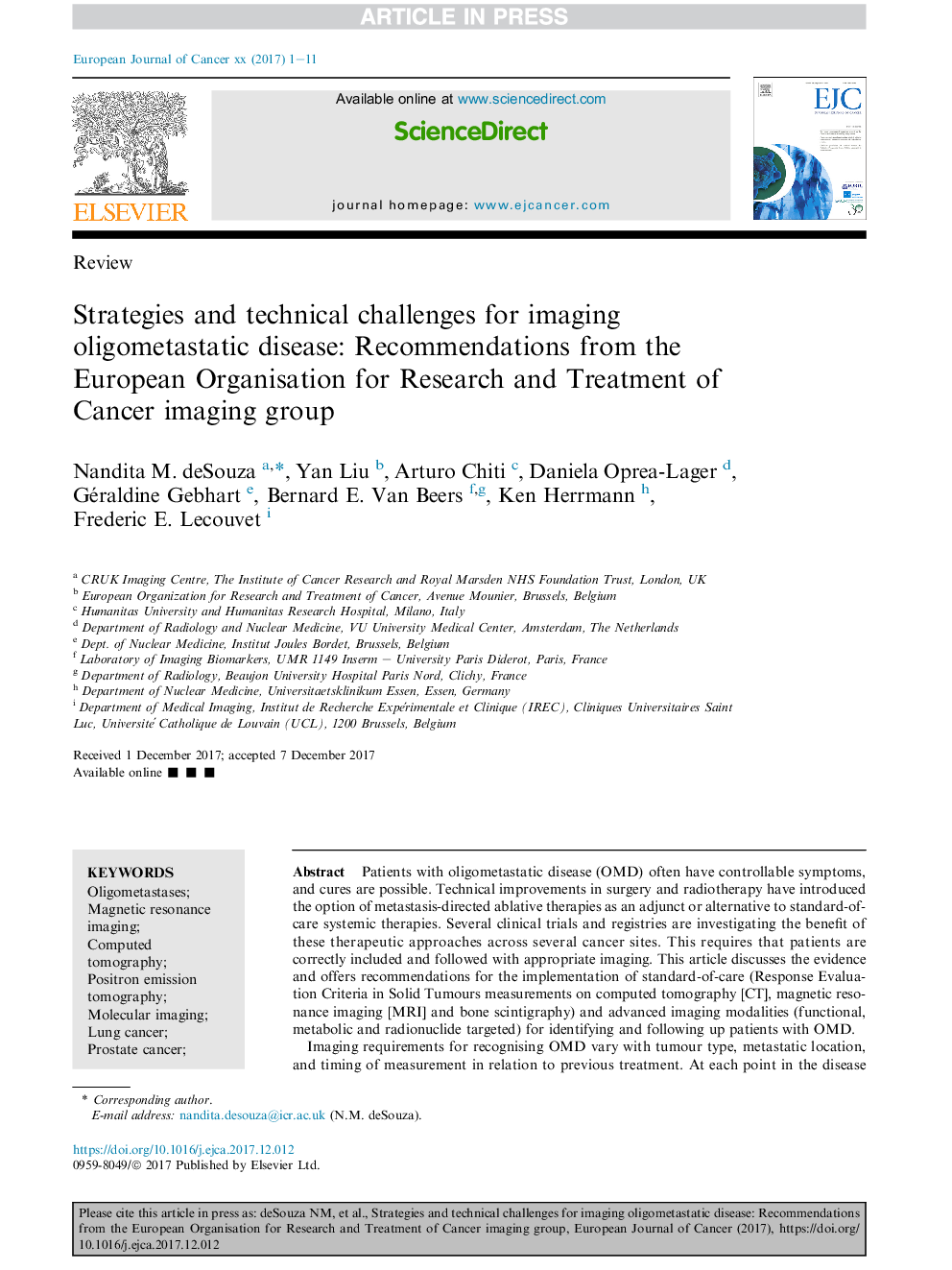| Article ID | Journal | Published Year | Pages | File Type |
|---|---|---|---|---|
| 8440377 | European Journal of Cancer | 2018 | 11 Pages |
Abstract
Imaging requirements for recognising OMD vary with tumour type, metastatic location, and timing of measurement in relation to previous treatment. At each point in the disease cycle (diagnosis, response assessment and follow-up), imaging must be tailored to the clinical question and the context of prior treatment. The differential use of whole-body approaches such as 18F-FDG-positron emission tomography (PET)/CT, diffusion-weighted MRI, 18F-Choline-PET/CT and 68Ga-prostate specific membrane antigen-PET/CT require rationalisation depending on clinical risk assessment. Optimal standardised imaging approaches will enable OMD trials to document patterns of disease progression and outcomes of treatment. Quality assured and quality controlled imaging data included in databases such as the European Organisation for Research and Treatment of Cancer Imaging platform for the Oligocare trial (a prospective, large-scale observational basket study being set up to collect outcome data from patients with OMD treated with radiation therapy) will establish a large and high-quality imaging warehouse for future research.
Keywords
Related Topics
Life Sciences
Biochemistry, Genetics and Molecular Biology
Cancer Research
Authors
Nandita M. deSouza, Yan Liu, Arturo Chiti, Daniela Oprea-Lager, Géraldine Gebhart, Bernard E. Van Beers, Ken Herrmann, Frederic E. Lecouvet,
